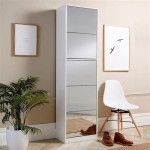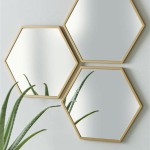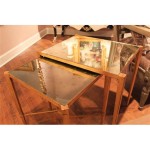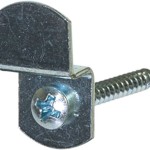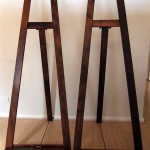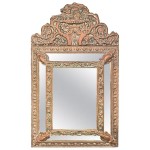Best Glue for Mirror to Wood
Attaching a mirror to wood requires an adhesive that provides a strong, lasting bond while remaining flexible enough to accommodate slight movements and temperature changes. An improper adhesive can lead to a dangerous situation with the mirror detaching and falling. Choosing the right glue is crucial for safety and longevity.
Several factors influence the choice of the best adhesive for this specific application. The size and weight of the mirror are primary considerations. A small, lightweight mirror requires less robust adhesion than a large, heavy one. The type of wood also plays a role, as some woods are more porous than others, affecting how the glue bonds. Finally, the environment where the mirror will be placed matters. A bathroom mirror, for example, will be exposed to higher humidity levels than a mirror in a bedroom.
Construction adhesives offer a strong and durable bond, making them suitable for heavier mirrors. These adhesives are typically formulated with polymers that provide high strength and resistance to moisture. They are often available in various formulations, including grab adhesives, which offer an initial strong hold for quicker installation. When using construction adhesive, ensuring adequate ventilation is crucial due to the potential presence of volatile organic compounds (VOCs).
Mirror mastics are specifically designed for adhering mirrors to various substrates, including wood. These adhesives are formulated to prevent silvering, a phenomenon where the mirror's reflective backing is damaged by the adhesive. Mirror mastics are typically neutral-cure silicone sealants, providing excellent flexibility and resistance to moisture and temperature changes. This flexibility is essential for accommodating the slight expansion and contraction of the wood and mirror due to temperature fluctuations.
Epoxy adhesives provide an extremely strong and rigid bond, making them a viable option for heavy mirrors and demanding applications. Epoxies consist of two parts: a resin and a hardener. When mixed, these components react chemically to create a powerful bond resistant to moisture, temperature extremes, and chemicals. However, epoxies require precise mixing and can be more challenging to work with compared to other adhesives.
Polyurethane-based adhesives are another option for bonding mirrors to wood. They offer a strong, durable bond and are resistant to moisture and temperature fluctuations. Polyurethane adhesives expand as they cure, filling gaps and creating a tight seal. This characteristic makes them suitable for uneven surfaces, but it also requires careful application to avoid excess squeeze-out.
Silicone adhesives, particularly neutral-cure silicone, are often recommended for mirror installations due to their flexibility and resistance to moisture. They accommodate the expansion and contraction of the mirror and wood due to temperature changes, preventing stress on the bond. Silicone adhesives are also generally safe for use with mirror backings, reducing the risk of silvering. Acid-cure silicones should be avoided as they can damage the mirror backing over time.
Choosing the correct adhesive requires careful consideration of the project's specifics. For smaller, lightweight mirrors, mirror mastics or silicone adhesives are often sufficient. For larger, heavier mirrors, construction adhesives, epoxies, or polyurethane-based adhesives are generally more suitable. Always check the manufacturer's recommendations for both the mirror and the adhesive to ensure compatibility and optimal performance.
Proper surface preparation is essential for achieving a strong and lasting bond regardless of the adhesive chosen. Both the wood and the mirror backing should be clean and dry. Any dust, dirt, or grease should be removed using a suitable cleaner. For porous wood surfaces, applying a sealer can improve adhesion and prevent the wood from absorbing the adhesive.
Application techniques vary depending on the chosen adhesive. Some adhesives require applying beads or dots to the back of the mirror, while others require spreading a thin layer across the surface. Always follow the manufacturer’s instructions for the specific adhesive being used. Proper application ensures optimal bond strength and minimizes the risk of the mirror detaching.
Safety precautions are essential when working with adhesives. Adequate ventilation is necessary, especially when using adhesives containing VOCs. Wearing gloves and eye protection is recommended to prevent skin and eye irritation. Following the safety guidelines provided by the adhesive manufacturer is crucial for ensuring a safe and successful installation.
Selecting the appropriate adhesive for attaching a mirror to wood depends on several factors, including the mirror's size and weight, the type of wood, and the environmental conditions. By carefully considering these factors and understanding the properties of various adhesive types, one can ensure a secure and long-lasting bond, contributing to the safety and aesthetics of the installation.

4 Easy Steps To Glue Mirror Wood
What Is The Best To Use Glue Mirrors A Wall Quora

4 Easy Steps To Glue Mirror Wood

Mirror Silicone Sealant Diy Bostik

How To Glue A Mirror Wood Fast Effective Start Woodworking Now

How To Glue A Heavy Mirror The Wall Mom Blog Society

7 Best Adhesive To Attach Wood Mirror Which Sticks Out

Mirror Fix 100 Adhesive Manufacturers

7 Best Adhesive To Attach Wood Mirror Which Sticks Out

Evo Stik Light Grey Mirror Adhesive 290ml Diy At B Q


